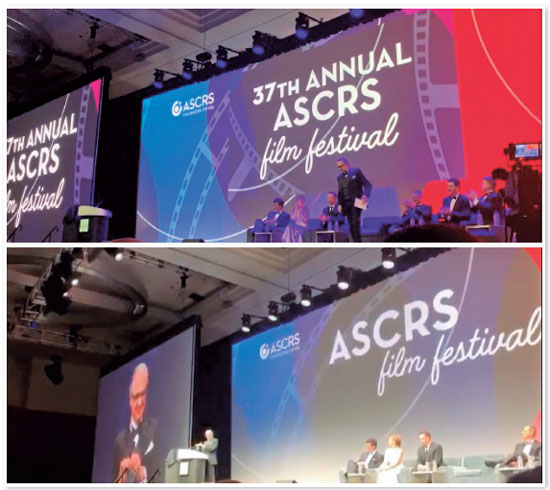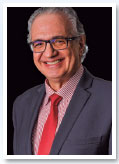Fernando Cançado Trindade1,2
DOI: 10.17545/eOftalmo/2023.0001

The increasing use of video in scientific presentations attests to the triumph of dynamic images over static ones. Moving (dynamic) images make memorization much easier, for example, no one forgets scenes from movies seen decades ago, as opposed to some printed story read less recently. Videos have a great power of synthesis. The old maxim “a picture is worth a thousand words” is particularly applicable to dynamic images, and this fact is supported by countless resources currently available. In any field of human knowledge, video represents the most efficient medium of information dissemination and education. As an example, consider the revolution brought about by YouTube from 2005 by efficiently and quickly democratizing information.
Current scientific film festivals have already been incorporated into the schedules of our specialty’s major conferences, and these festivals represent an excellent opportunity to publicize innovative research, new surgical techniques, challenging cases, and different approaches to addressing a particular complication, among others. Notably, the American Society of Cataract and Refractive Surgery (ASCRS) pioneered scientific video festivals in the early 1980s and was soon followed by other major international entities including the European Society of Cataract and Refractive Surgery (ESCRS), the American Academy of Ophthalmology (AAO), the Asia-Pacific Association of Cataract and Refractive Surgeons (APACRS), and the Brazilian Association of Cataract and Refractive Surgery (BRASCRS).
Numerous advances in the field of cataract surgery in recent years were initially presented at the ASCRS Film Festival, including continuous anterior capsulotomy (later called anterior capsulorhexis) by Gimbel in Boston in 1985; the use of triamcinolone to facilitate vitreous visualization by Burk in Philadelphia in 2002; the phaco chop technique by Nagahara in Seattle in 1993; the Malyugin ring by Malyugin in San Francisco in 2006; and most recently Yamane’s scleral fixation technique in New Orleans in 2016.
I was present at all these events and could witness the enormous impact these innovations had when presented. Furthermore, I could see how these innovations were readily accepted and incorporated by the ophthalmic community worldwide.
Currently, films presented in conferences are cited in certain publications. In this way, scientific films can be considered scientific references, similar to posters and free papers.
I have included below some considerations for a film to be well evaluated in these festivals. These considerations are the result of what I have learned after participating in several film competitions at numerous conferences in the United States, Europe, and Asia. I also had the experience of being a judge a few times at the BRASCRS conferences in Brazil, and the honor of being invited twice to be the Honorary International Guest Judge at the ASCRS conferences, in Washington in 2005 and in San Diego in 2019.
My first recommendation is that the film should be prepared well in advance, in no hurry, enjoying the production process.
Since the allowed length for videos in these festivals is relatively short–approximately eight minutes–it is important for the producer to have strong synthesis skills in divulging their work, invention, technique, and complication, among others. Naturally, the film should be well edited, without exaggerated special effects, with clear narration and a pleasant soundtrack. The title of the film should preferably be short and catchy, and the script should be clear and concise.
You should begin the film by pointing out its purpose. The film needs to immediately capture the viewer’s attention, and it should be instructive, objective, and with excellent image and sound definition. Recorded images should be those viewed by the surgeon in the microscope (12 o’clock is below) or by the examiner in the slit lamp (12 o’clock is above). The voiceover does not need to be professional, but it needs to be clear, with normal rhythm, in an appropriate language, and obviously intelligible, if it is done in another language, such as English. The chosen theme of the film should be important, with scientific merit, of interest to the specialty, preferably original, applicable, and bringing some relevant contribution. You must first write the script–what you want to show–and then fit the selected images into it.
We often see producers, in their eagerness to convey all their knowledge on the subject in the little time they have available, speed up the voiceover or use too many images, making the film confusing (a busy video), scientifically dense, and unpleasant to watch. Always remember that too much information makes it difficult to follow the video and confuses the viewer. Therefore, I re-emphasize the importance of having synthesis skills to make a good short film.
Other recommendations worth noting are:
- You should avoid showing several scenes at the same time and background music that could distract from the narration or even compete with it, and the volume of the background music should be lowered during narration.
- Long periods without narration certainly diminish the judge’s/viewer’s concentration.
- Computer animation should be precise and used for the sole purpose of making it easier for the viewer to understand the subject; too much animation indicates a lack of content, and it is annoying when it serves no purpose.
- You should never include too many slides (static images) in the film, otherwise the presentation will cease to be a film and will become a slide show.
- Whenever you can, do not use computer-generated voice.
- Be very careful to avoid including commercial promotion of products or even personnel. The judges of these video contests are experienced individuals who immediately identify interests other than scientific/educational ones, which are the main reason for these festivals.
- A dash of fine humor and subtle irony are always welcome and appreciated.
- Before the end you should highlight the main points of the film, and then end it with a good conclusion.
Good luck with your video production!
Dr. Fernando Cançado Trindade was: Professor of Ophthalmology at the Federal University of Minas Gerais (1983-2008); President of the Brazilian Society of Cataract and Intraocular Implants (1994-1996); Awarded in Film Festivals at ASCRS conferences (San Diego, 1998; Seattle, 1999; Philadelphia, 2002; San Francisco, 2003; San Diego, 2007; San Francisco, 2009) and Grand-Prizes (Boston, 2000; Chicago, 2008); at ESCRS conferences (Paris, 2004; Berlin, 2008; Barcelona, 2009; Amsterdam, 2013) and at the APACRS congress (Singapore, 2013).

Funding: No specific financial support was available for this study.
Conflict of interest: None of the authors have any potential conflict of interest to disclose.
Received on:
January 9, 2023.
Accepted on:
January 11, 2023.